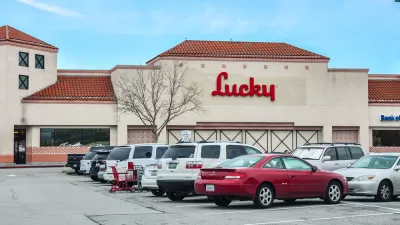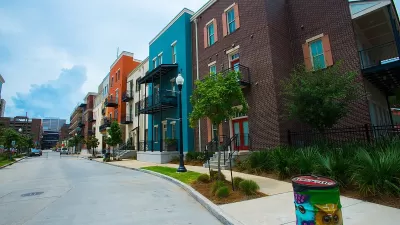It’s time to rewrite California’s building and planning codes for the 21st century, says architect Mark Hogan.

California's obstacles to addressing climate change and the housing shortage include its own code, a piece in BOOM argues.
Layers of code create what Hogan calls a "hairball"—a term borrowed from programming—in which, ultimately, "each bit of code can be used to stop another from doing its work." He writes:
Some of California’s own largest policy initiatives are at odds with each other … Reducing VMT requires density, but density is nearly impossible to achieve while constructing net-zero buildings.
To tease out some of the threads making up the hairball of code, Hogan tackles the history of planning, zoning, and building codes across California since the late 19th century. Though they generally arose independently in each city, early codes were defined by the times: they sought to counter the conditions of early American cities through ample space, separation from industry, and, of course, racist exclusion.
Though planning goals have changed, in many cases, codes have not kept up. Now, Hogan urges, "[in order to] create affordable cities, responsive to a changing climate and prudent with limited natural resources, we may need to rewrite the rules from scratch with a new set of goals in mind."
For one, he suggests semi-dense urban development—think low-rise apartments or in-law units:
Disallowing this kind of gentle medium density in the name of preserving neighborhood character does a disservice to those who arrived here or were born too late to afford a single-family home within commuting distance of their jobs. It also fails to recognize that making communities more walkable and sustainable will improve neighborhood character over time, not diminish it.
FULL STORY: Re-Coding Planning

Planetizen Federal Action Tracker
A weekly monitor of how Trump’s orders and actions are impacting planners and planning in America.

Chicago’s Ghost Rails
Just beneath the surface of the modern city lie the remnants of its expansive early 20th-century streetcar system.

San Antonio and Austin are Fusing Into one Massive Megaregion
The region spanning the two central Texas cities is growing fast, posing challenges for local infrastructure and water supplies.

Since Zion's Shuttles Went Electric “The Smog is Gone”
Visitors to Zion National Park can enjoy the canyon via the nation’s first fully electric park shuttle system.

Trump Distributing DOT Safety Funds at 1/10 Rate of Biden
Funds for Safe Streets and other transportation safety and equity programs are being held up by administrative reviews and conflicts with the Trump administration’s priorities.

German Cities Subsidize Taxis for Women Amid Wave of Violence
Free or low-cost taxi rides can help women navigate cities more safely, but critics say the programs don't address the root causes of violence against women.
Urban Design for Planners 1: Software Tools
This six-course series explores essential urban design concepts using open source software and equips planners with the tools they need to participate fully in the urban design process.
Planning for Universal Design
Learn the tools for implementing Universal Design in planning regulations.
planning NEXT
Appalachian Highlands Housing Partners
Mpact (founded as Rail~Volution)
City of Camden Redevelopment Agency
City of Astoria
City of Portland
City of Laramie





























